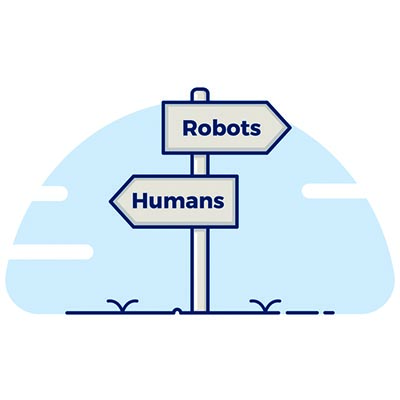
Most industries utilize automation to at least some degree. With plenty of benefits that can be taken advantage of, businesses need to remember that they still must be careful about implementing these systems, as failing to do so could cause downtime and negatively impact productivity. Here are some of the major benefits and detriments that your organizations should consider when examining automation.
The Pros
There is more than one application and way to use automation. While the uses are more general than specific, they can be applied to several different kinds of goals or processes, whether it’s customer service or data processing. In this sense, automation can be used in a pretty universal way.
Efficiency
It’s obvious that certain processes take a considerable amount of time to complete, but if they are handled by automated systems, they can be completed much more efficiently than before. In other words, since you don’t have to focus on these tasks, you can instead devote the time to something else entirely. This effectively adds more time to the workday by removing routine tasks that can be handled by an automatic process.
Minimizing Repetition
If someone has to do the same task over and over again, they are doomed to lose interest and make mistakes. If these tasks don’t require focus, then the employees will likely let their mind wander, and productivity can suffer. This makes even a quick task more likely to be repeated multiple times, making it less likely to yield a return on the investment. Automation makes it more convenient and less risky to leave monotonous tasks to employees. Trust us when we say employees will thank you for taking these tasks off their plate and freeing up their schedule for others.
Convenience
When someone reaches out to your business, it’s likely they need your help with something, and they need it fast. If you can’t provide it on a convenient time frame, chances are they will take their needs elsewhere. Automation gives them the ability to get help from a chatbot or other similar automated system without the need to staff someone at all times to address immediate needs. This gives you a better chance at being able to respond to their needs when they reach out to your organization.
Potential Cons
Automation might be quite helpful for businesses, but there are some issues that should be addressed in order to ensure it doesn’t become a liability for your business. For example, some processes are simply too complex for a machine to handle in the same way a human brain can. Most automated systems are limited by design, thus ensuring that they will be limited to the task assigned to them. After all, an automated system’s purpose isn’t being fulfilled if you have to provide constant feedback to it. Here are some ways you can make sure the faults of automation sting less:
- Use automation sparingly: Some of the services that could be automated likely don’t need to be. This is particularly true for more complex issues. Consider that many of the people who contact your business have a point of contact within your organization and regular requests, meaning that working with a human might not be such a bad thing if they are available at that time. In this way, automation supplements human contact rather than replaces it.
- Have employees direct the automation: If an automation system can’t perform a task on its own, having employees direct it during more complex tasks can work to mitigate the issue. A complicated request can be made, but still processed and understood with the right direction.
- Ingrate your automation: You don’t want to stop processes midway. As long as your automation is well-designed and thought-out, tasks can be integrated with automation to ensure they are handled in the most complete way possible.
What are some ways your organization can benefit from automation? Let us know in the comments.
